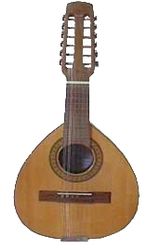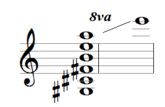 | |
| String instrument | |
|---|---|
| Classification | Plucked chordophone |
| Hornbostel–Sachs classification | 321.321 and 321.322 (Necked bowl lute for roundback, necked box lute for flatback) |
| Playing range | |
 | |
| Related instruments | |
| Bandola, laúd, mandolin, octavina | |
The bandurria is a plucked chordophone from Spain, similar to the mandolin and bandola, primarily used in Spanish folk music, but also found in former Spanish colonies.








